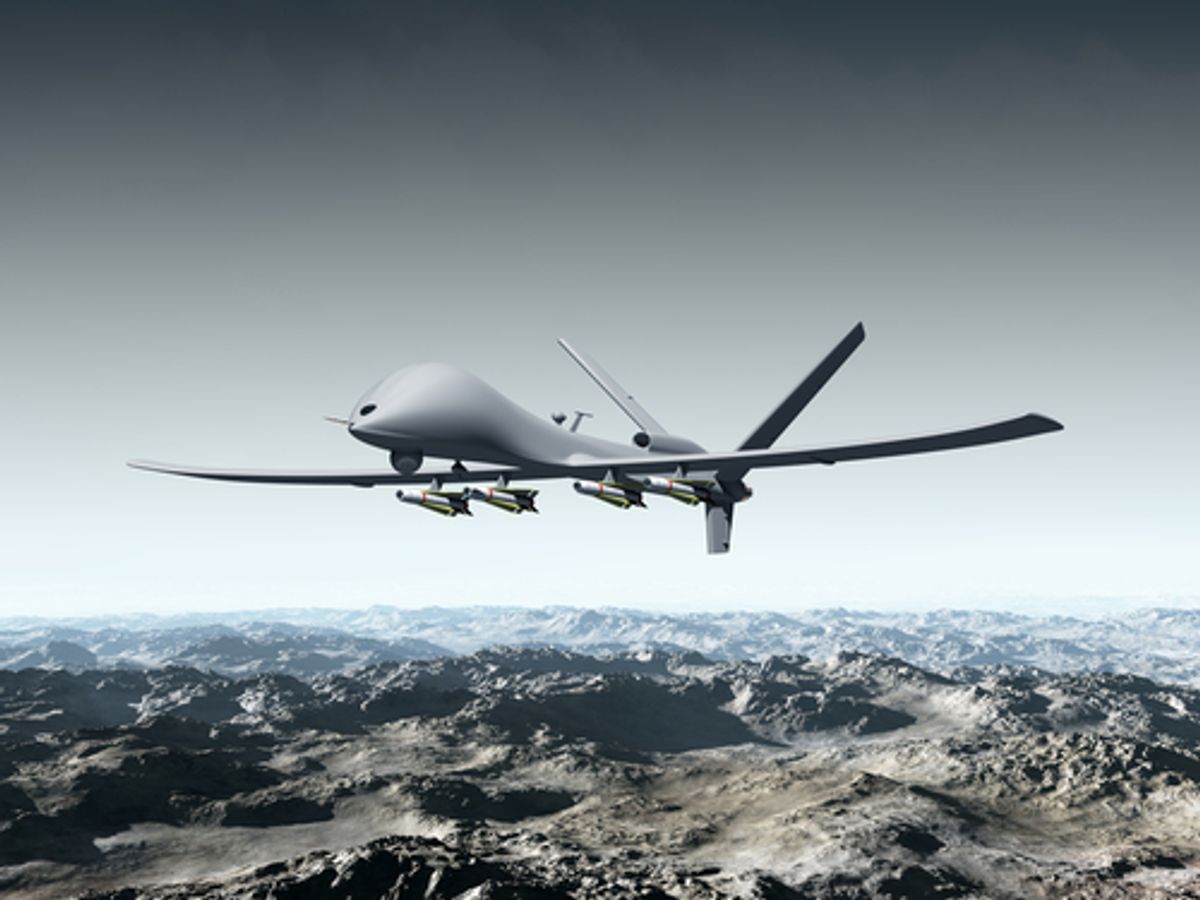The first target of a CIA drone strike in Pakistan was not a top al-Qaida operative. Rather, as noted in the New York Times this weekend, a Pakistani ally of the Taliban who led a tribal rebellion and was marked by Pakistan as an enemy of the state. " In June 2004, Nek Muhammed was killed by a missile from a Predator Drone (as well several others, including two boys, ages 10 and 16). Although the Pakistani military claimed the strike -- revealed as a lie by Mark Mazzetti in his new book, adapted in the Times article.
Following his recent visit to Pakistan, Ben Emmerson, U.N. special rapporteur monitoring human rights in counterterrorism programs, reported that the Pakistani government had given no tacit consent for U.S. drones to enter Pakistani air space. However, Mazzetti reports that such a secret deal was made, at least with the Pakistani military, signed in blood with Muhammed's death. Via the Times:
In a secret deal, the C.I.A. had agreed to kill him in exchange for access to airspace it had long sought so it could use drones to hunt down its own enemies.
That back-room bargain, described in detail for the first time in interviews with more than a dozen officials in Pakistan and the United States, is critical to understanding the origins of a covert drone war that began under the Bush administration, was embraced and expanded by President Obama, and is now the subject of fierce debate. The deal, a month after a blistering internal report about abuses in the C.I.A.’s network of secret prisons, paved the way for the C.I.A. to change its focus from capturing terrorists to killing them, and helped transform an agency that began as a cold war espionage service into a paramilitary organization.
The C.I.A. has since conducted hundreds of drone strikes in Pakistan that have killed thousands of people, Pakistanis and Arabs, militants and civilians alike. While it was not the first country where the United States used drones, it became the laboratory for the targeted killing operations that have come to define a new American way of fighting, blurring the line between soldiers and spies and short-circuiting the normal mechanisms by which the United States as a nation goes to war.



Shares